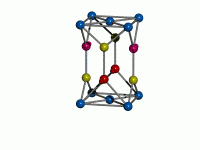Smaller, faster, and more robust and energy efficient electronic devices could be developed, thanks to research into an entirely new form of digital memory.
The new form of memory, known as antiferromagnetic spintronics, was recently unveiled in the journal Science, by an international team of researchers lead by Dr Peter Wadley at Nottingham University, and funded by EPSRC and the EU.
Antiferromagnets have a theoretical switching speed limit that is roughly 1000 times faster than the best existing memory devices, Wadley said.

What’s more, they do not produce stray magnetic fields, meaning they can be packed more closely together to produce a memory device with a higher storage density. This also prevents data stored on the devices from being stolen by magnetic scanners.
Finally, unlike ferromagnets or solid state memory, antiferromagnets are not sensitive to external magnetic fields or radiation, meaning they do not need to be shielded from certain equipment to prevent the data being erased. This makes them suitable for use in harsh environments such as on satellites and aircraft, or for some military applications.
As a result, they could one day act as a “universal memory”, replacing all other forms of memory in computing, said Wadley.
In ferromagnetic materials, microscopic magnets sitting on top of individual atoms, known as spins, have their north poles pointing in one direction.
In antiferromagnetic materials, in contrast, the north poles of half of the spins point in one direction, while the other half point in another.
This has previously made it difficult for researchers to use the material for data storage, as the spins cannot all be controlled with magnetic fields, unlike ferromagnets.
But by using an antiferromagnet with a very specific crystal structure, CuMnAs, the researchers have shown that they are able to control the alignment of these spins using electrical pulses.
“Running the electric current through the antiferromagnet generates a field, which varies in direction, much like the spins on the antiferromagnet itself,” said Wadley.
These fields then couple very strongly to the antiferromagnet, he said. “Using that you can then efficiently and easily rotate the direction that the spins are aligned along,” he said.
In this way, the researchers are able to use the technique to write and store data onto a microchip made of antiferromagnetic material, and to read it out again.
The researchers now plan to build prototype USB memory devices, to demonstrate the technology.




Project to investigate hybrid approach to titanium manufacturing
What is this a hybrid of? Superplastic forming tends to be performed slowly as otherwise the behaviour is the hot creep that typifies hot...